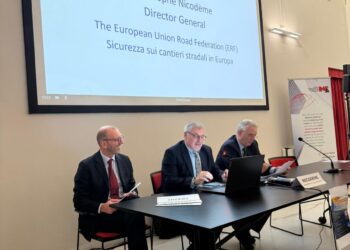
15 July 2021 | Brussels
On the 14 July, the European Commission presented the “Fit for 55” package, a first set of measures within the Sustainable and Smart Mobility Strategy to accelerate the transformation of the road sector in Europe.
The ambitious proposals aim at reducing net greenhouse gas emissions by at least 55% by 2030, compared to 1990 levels, paving the way to achieve a carbon neutral economy in 2050. The long-awaited announcement kicks the legislative process in which intensive discussions between all actors will happen at the European Parliament and Council levels to satisfy all expectations, including economic and social, without having a negative impact on the most vulnerable part of the population.
Considering the objective to end internal combustion engines from 2035, stronger incentives will be needed to accelerate the production and sales of low and zero emissions vehicles. New CO2 standards valid from 2020 have contributed to increase the sales curve but a tremendous effort is still necessary due to several elements including the lack of infrastructure.
In this regard, the new proposal for an Alternative Fuels Infrastructure Regulation stands as the main tool to deploy an extensive network of charging and re-fuelling infrastructure through the entire TEN-T. Stations will be developed for light, but also for heavy duty vehicles. The Regulation will also guarantee that, in each Member State, sufficient public charging capacity will be in place to meet the demands of the bigger fleet of zero emission vehicles. Concretely, fast recharging points will have to be installed every 60 km in the TEN-T network whereas hydrogen refuelling stations every 150 km along the TEN-T network.
Towards the end of the year, the Commission will focus on improving green performance in urban areas through the revision of the current urban mobility framework. Especially after the pandemic, new trends have risen in importance, like cycling. Ad-hoc infrastructure adaptation completed in record time to boost urban cycling will require to be permanent and ensure that new mobility patterns do not represent a passing fad. As well, road safety should stand as main priority for urban planners through the deployment of the best performance and innovative infrastructure elements as signs, markings or barriers.
The ERF welcomes the legislative package as part of the societal and environmental commitment from the road infrastructure sector. Technologies and procedures have been already developed by our members not only for charging vehicles but as well to optimise sustainable performance in the construction and maintenance of the network. For a successful deployment, our organisation calls on the importance of innovative public procurement processes escaping from the lowest price while promoting elements as new technologies seeking for a smarter and more sustainable long-term vision.
For further information about the EC press release, please click here.
-
Safer, Smarter Roads Discussed at the 25th Belgian Road Congress
October 10, 2025 -
ERF calls for Smarter, Safer Road Work Zones at Bologna Forum
October 9, 2025




